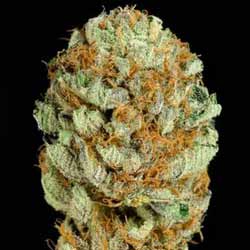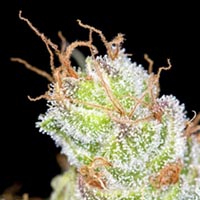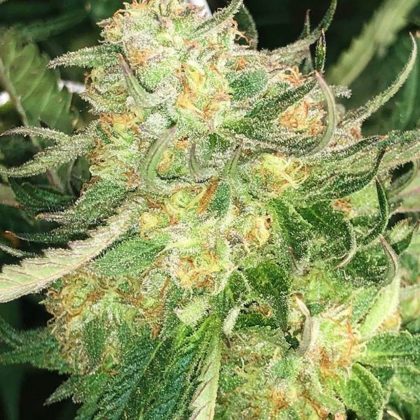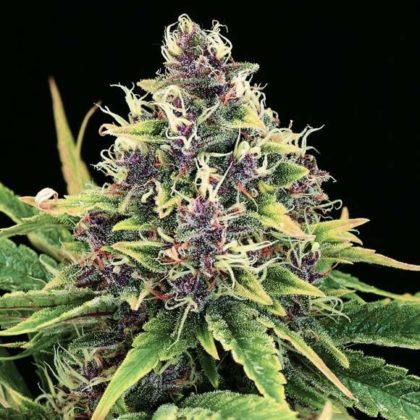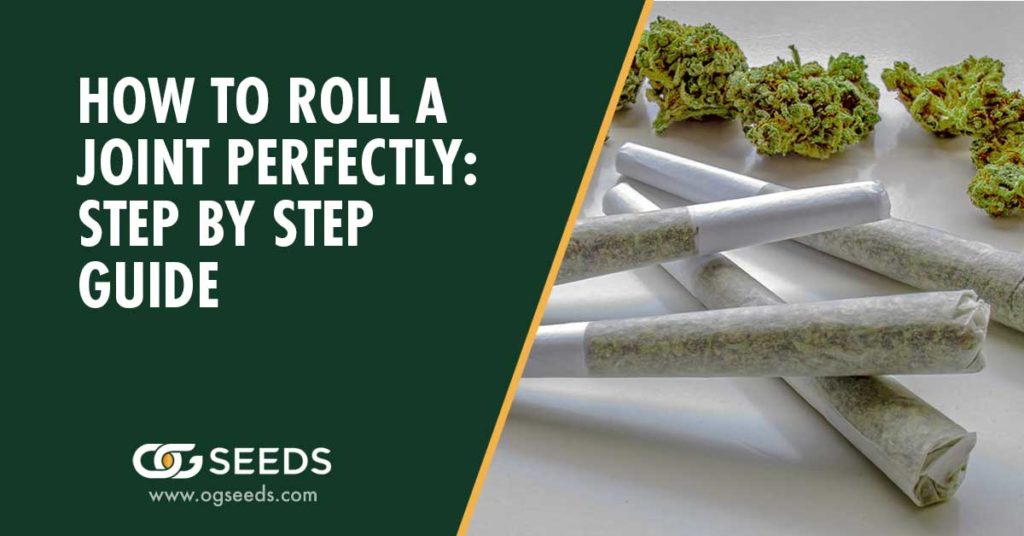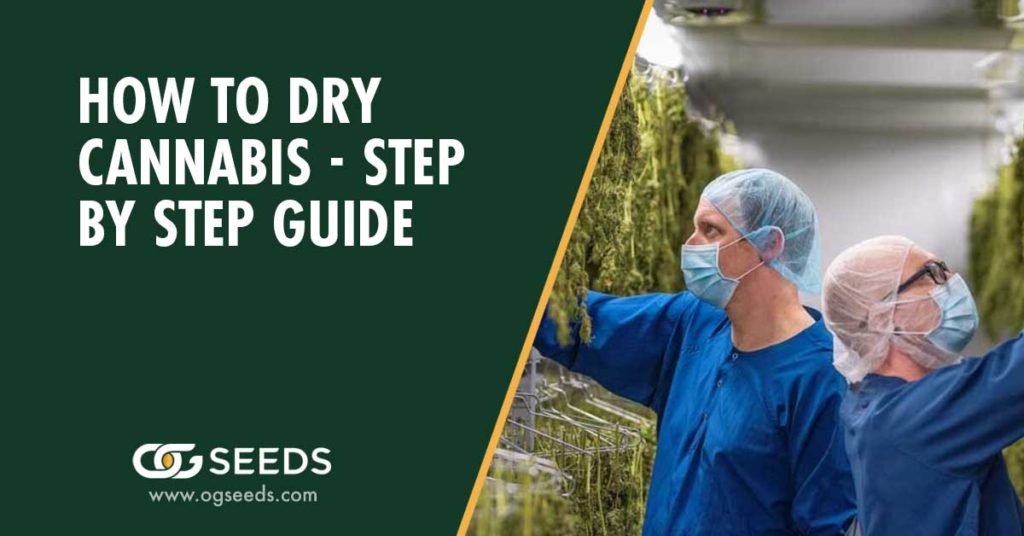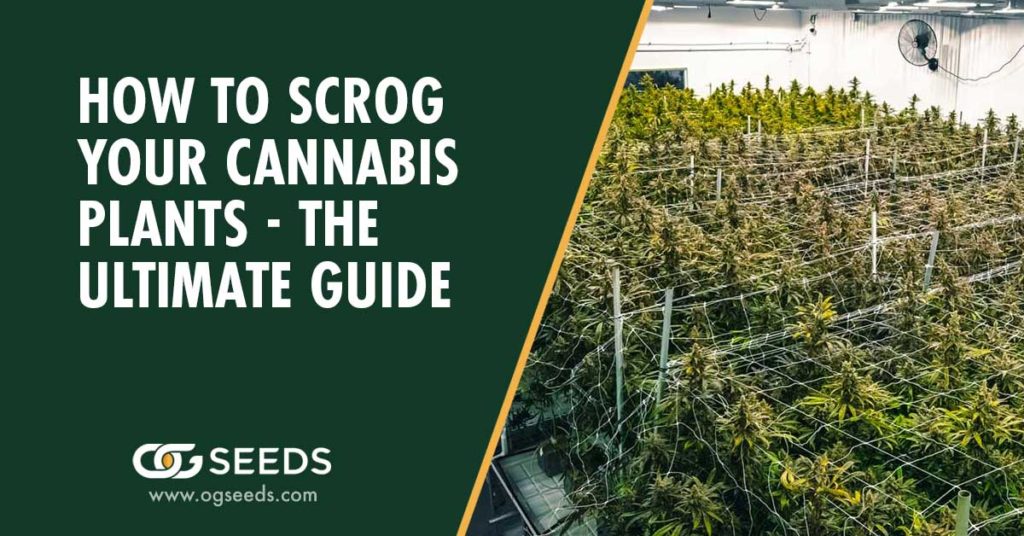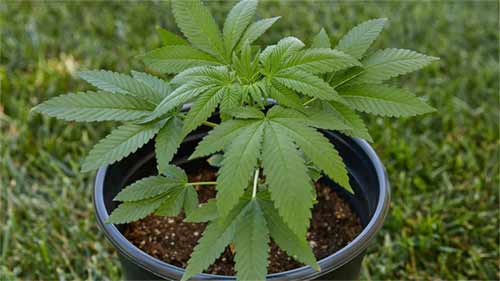![How to Water Cannabis Plants [The Ultimate Watering Guide]](https://ogseeds.com/wp-content/uploads/2023/02/How_to_Water_Cannabis_Plants_The_Ultimate_Watering_Guide_1200x628-1024x536.jpg)
How to Water Cannabis Plants [The Ultimate Watering Guide]
Table of Contents
Watering Cannabis – How, When, And What Type Of Water
Growing a healthy cannabis plant requires proper watering techniques. The right amount of water at the right time is essential. Using the right type of water for growing can mean the difference between a bountiful harvest and a stunted plant. Knowing how to water your growing plants can seem overwhelming initially. However, with a few key guidelines and tips, you can ensure plants receive the hydration they need to thrive.
In this article, we’ll discuss the best practices for watering your cannabis plants. This includes when to water, how much to water, and what type of water to use. Whether you’re a beginner or an experienced grower, this guide will help ensure your cannabis plants receive the proper care they need to grow strong and healthy.
The Importance Of Watering Cannabis Correctly
Watering is one of the most critical aspects of cannabis cultivation. Correct watering practices can promote healthy growth, increase yield, and improve the quality of the final product. On the other hand, incorrect watering techniques can lead to nutrient deficiencies and other issues that can severely impact the health of your plants.
Water is essential for cannabis plants as it helps transport nutrients and oxygen to the roots supports photosynthesis, and regulates temperature. Proper watering also helps to prevent stress, which can cause plants to produce lower yields and a lower-quality product. Proper watering will help to maintain the proper pH balance in the soil, which is critical for nutrient uptake.
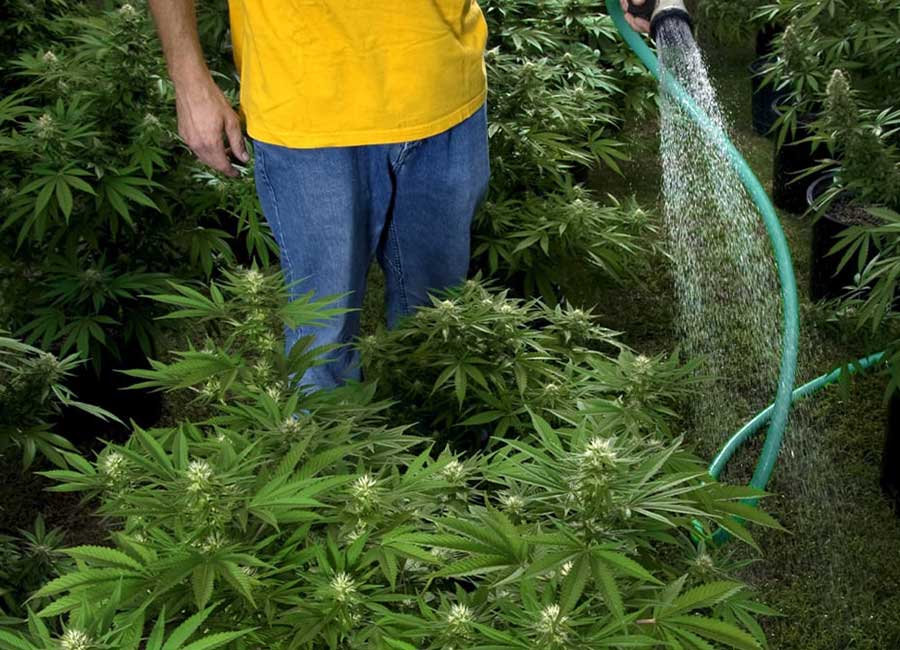
How To Water Cannabis Plants
When watering cannabis plants, it is important to focus on the base of the stalk. From there, gradually work your way toward the outer edges of the pot. This method ensures the roots get an adequate water supply without causing damage to the leaves. It is best to avoid spraying water directly onto the leaves. This can lead to issues such as mold growth or leaf burn. Instead, aim to pour the water gently and slowly at the base of the plant. You want to take care, not disturb the soil, or the roots. It is also important to monitor the soil moisture level regularly. Over-watering or under-watering can negatively impact the health and growth of plants.
How Much Water Do Cannabis Plants Need?
The amount of water that weed plants need can vary greatly. This depends on the growth and development stage. As plants get larger, they will typically require more water. However, it is best to water the plants when the soil or growing medium is almost completely dry. Watering this way means that when you water, you should provide enough water so that it is fully absorbed into the soil or medium and just about to start leaking out of the bottom of the pot. Over-watering can lead to several issues, Monitoring the soil moisture levels closely and adjusting the watering schedule accordingly is important. Regular watering is necessary to keep the plants healthy. Moreover, it ensures optimal growth. Be sure to provide your plants with enough water but not too much.
When Is The Best Time To Water Cannabis Plants?
The best time to water weed plants is typically when the light cycle begins. Whether from natural sunlight or artificial grow lights. Watering the plants during the middle of the day is not recommended. This can lead to evaporation and water waste. When the light cycle begins, watering in the morning allows the plants to absorb the water they need to fuel their growth throughout the day. Avoid watering the plants in the late afternoon or in the evening. This can leave the soil or grow medium damp overnight, creating conditions ideal for mold and other fungal growth. Watering the plant first thing in the morning can help ensure they get the water they need to grow and thrive while minimizing the risk of disease or other problems.
Do Outdoor Cannabis Plants Require More Water Than Indoor Plants?
Outdoor cannabis plants generally require more water than indoor plants. Generally, because outdoor plants are exposed to a wider range of environmental conditions, including high temperatures, strong winds, and direct sunlight, these conditions can cause the soil or growing medium to dry out more quickly, leading to a greater need for water. Additionally, outdoor plants often have larger root systems and grow in larger containers or directly in the ground, meaning they have a larger volume of soil or growing medium that needs to be kept hydrated. Indoor plants, on the other hand, are usually grown in smaller containers and are protected from the elements, which helps to conserve moisture in the soil or growing medium. As a result, indoor plants typically require less water. However, the exact amount will depend on factors such as the plant’s size, the growing medium’s type, and the ambient temperature and humidity.
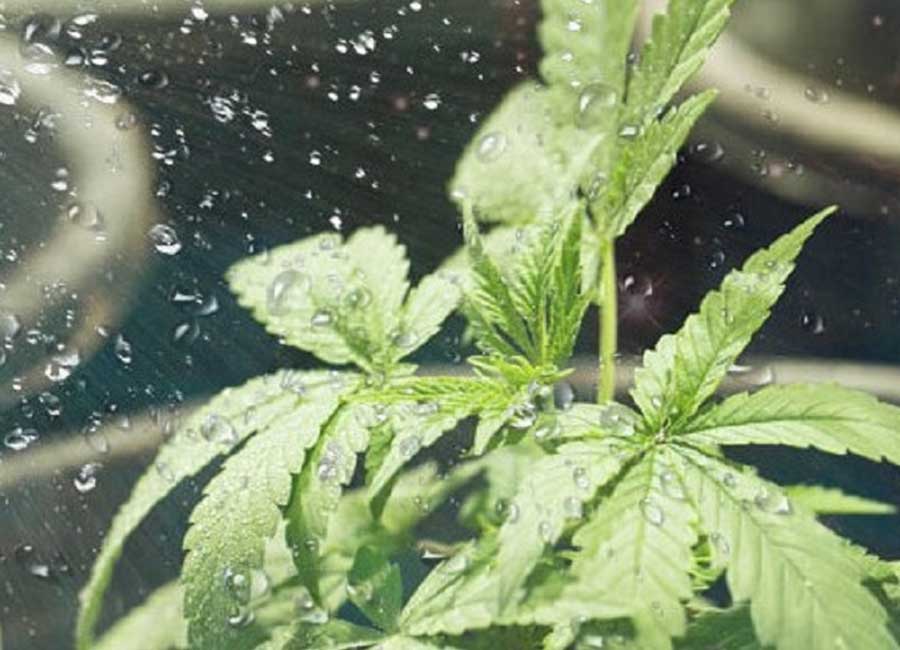
How Often Should Cannabis Plants Be Watered?
The frequency of watering for cannabis plants can vary depending on several factors. These include the stage of growth, pot size, growing medium, humidity, temperature, and others. Each stage of growth has different watering requirements. It is best practice to pay attention to the specific needs of your plants. This will help to determine the optimal watering schedule. Average watering amounts and intervals can be provided as a general guidelines. However, it is important to note that these can vary. It is always best to closely monitor your plants and adjust accordingly.
Watering For Germination Stage
Watering frequency during the germination phase of cannabis growth should not be based on a set schedule of every 4-7 days. Instead, it is important to keep the soil or growing medium consistently moist. This will encourage the seeds to sprout and begin to grow. Keeping soil moisture can be achieved by watering several times a day. For example, every 4-6 hours, to ensure that the soil remains moist. It is important not to overwater. This can lead to mold or other issues that can harm the developing seedlings.
Watering For Germination Tips
It is also important to ensure that the soil or growing medium has good drainage. Standing water can suffocate the roots of the seedlings. The exact watering frequency during the germination phase will depend on factors such as temperature and humidity levels, so it is best to pay attention to the needs of your plants and adjust the watering schedule accordingly.
Watering For Seedling Stage
During the seedling phase of cannabis growth, it is important to maintain moist soil or growing medium while allowing the top inch to dry out slightly between waterings. It is recommended to water the seedlings every 1-2 days or as needed based on the specific conditions of the growing environment, such as temperature and humidity levels. As the seedlings grow and develop, they will require more water, so it is important to pay close attention to their needs and adjust the watering schedule accordingly. It is also important to ensure that the soil or growing medium has good drainage, as standing water can suffocate the roots of the seedlings.
Watering For the Vegetative Stage
The frequency of watering during the vegetative phase of cannabis growth will depend on several factors, including the size of the plants, the size of the pots, the type of growing medium used, temperature and humidity levels, and the light cycle. As the plants grow and mature, they will require more water. During this phase, it is important to water the plants thoroughly, allowing the soil or growing medium to dry out slightly between waterings.
General Watering Guidelines
A general guideline is to water the plants every 1-3 days or when the top inch or so of soil or growing medium is dry to the touch. However, it is important to pay close attention to the needs of your plants and adjust the watering schedule accordingly, as certain environmental factors may necessitate more or less frequent watering. Additionally, it is important to ensure that the soil or growing medium has good drainage, as standing water can suffocate the roots of the plants.
Watering For Flowering Stage
The watering frequency for the flowering stage may vary based on the size of the plants, the size of the pots, the type of growing medium used, temperature and humidity levels, and the light cycle. A general guideline is to water the plants every 2-3 days or when the top inch or so of soil or growing medium is dry to the touch. However, it is important to pay close attention to the needs of your plants and adjust the watering schedule accordingly, as certain environmental factors may necessitate more or less frequent watering. Overwatering can lead to mold or root rot, so avoiding excess water in the soil or growing medium is important. Good drainage is also important to ensure that the roots of the plants have enough oxygen to support healthy growth.
What Type Of Water Is Best For Cannabis Plants?
When watering cannabis plants, the type of water used can impact the growth and overall health of the plants. A good practice is to test the water for its parts per million (ppm), and if the level exceeds 300 ppm, consider using a more pure source. A lower ppm level means a lower likelihood of contaminants such as chlorine, calcium, and magnesium, which can harm the plants.
Tap Water (Unfiltered)
Using unfiltered tap water for cannabis plants can be problematic as it often contains high contaminants like chlorine, calcium, and magnesium that can harm the plants. These contaminants can build up in the soil, altering the pH levels and causing deficiencies that can impact the growth and health of the plants. While it is possible to use unfiltered tap water in a pinch, it is not recommended as a long-term solution. Investing in a water filtration system or using a different source of purer water with lower contaminants is better.
Water Collection System
A water collection system for cannabis plants is a system that will collect rainwater and store it for later use in watering plants. This system is a sustainable and cost-effective way to provide water for the plants, as it eliminates the need to use tap water and can also reduce water waste. The collected rainwater is typically stored in large containers or cisterns and can be used anytime. Cultivators can use a water collection system to help conserve resources and provide their plants with clean, natural water.
Bottled Water
Using bottled water for watering cannabis plants can be a viable option. Especially for those concerned about the contaminants in their tap water. Some growers opt for bottled purified or distilled water due to its purer and consistent composition. This can benefit the plants’ health. However, it is important to note that not all bottled water is created equal. Some may contain minerals or chemicals that can harm plants. Before using bottled water, it is recommended to check the labels or conduct a water test to ensure its quality and suitability for watering cannabis. Additionally, bottled water can be more expensive and less environmentally sustainable than other water sources, so it is important to weigh the pros and cons before deciding.
Reverse Osmosis Water (RO)
Reverse osmosis systems are popular for watering cannabis plants due to their purifying nature. A reverse osmosis system produces purified water by filtering through a reverse osmosis membrane, removing impurities such as minerals, salts, and other contaminants. Similar to using distilled water, this method results in low total dissolved solids (TDS) water, making it an ideal choice for cannabis plants as it helps prevent the buildup of excess minerals in the soil. Additionally, reverse osmosis water is free of chlorine, heavy metals, and other chemicals that can harm plants. However, it is important to note that reverse osmosis water can be too pure and may need to be adjusted with additional minerals before use, especially if the plant is in the flowering phase. Adding dissolved nutrients to your purified water will ensure the plants get enough minerals to aid their growth.
Distilled water
Distilled water is commonly used in the cultivation of cannabis because it is pure and free of minerals and contaminants that can negatively impact plant growth. Moreover, distilled water helps maintain a neutral pH level, which is crucial for the absorption of nutrients in the soil. Distilled water helps to avoid the buildup of salt and other mineral deposits in the soil, which can harm the plant’s root system. Using distilled water is a great method of watering your plants for some of the best results.
What Type Of Water Sources Should be Avoided?
Certain water sources should be avoided when growing cannabis. These sources include well water, softened water, and water with high sodium levels, nitrates, and other contaminants. Well water often contains minerals not ideal for cannabis plants, while softened water can contain excess sodium and other minerals that can harm the plant. High contaminants like nitrates and sodium can be toxic to the plant and should be avoided at all costs. High-quality filtered or purified water sources, like reverse osmosis or distilled water, are recommended to ensure that cannabis plants receive the best water source.
What PH Level Is Best For Growing Cannabis?
The optimal pH level for growing cannabis is between 6 and 7. A slightly acidic range of 6.0 to 6.5 is ideal for soil, and a slightly alkaline range of 6.5 to 7.0 is ideal for hydroponic systems. This pH range ensures that plants can properly absorb essential nutrients from the soil or water. If the pH level is too high or too low, the plants may not be able to absorb the necessary nutrients, leading to stunted growth and yellowing of the leaves.
What Temperature Is Best For Cannabis Growth?
Water temperature is another important factor in growing cannabis. Ideally, water used for watering should be between 65-70°F (18-21°C) as this temperature range is most suitable for healthy plant growth. If the water temperature is too hot or too cold, it can affect the plant’s absorption of nutrients and may lead to stress or damage. Hot water could shock the roots, and cold water could slow the plant’s growth.
Should I Aerate the Water Supply?
It is recommended to aerate the water supply for cannabis plants as it can help to improve the oxygen levels in the water and make it easier for the plants to absorb the nutrients they need. Aerating the water can be done by simply letting it sit for a few hours or using a water aeration device. However, it is important to note that the water temperature should still be within the optimal range for cannabis growth, which is between 65-75°F.
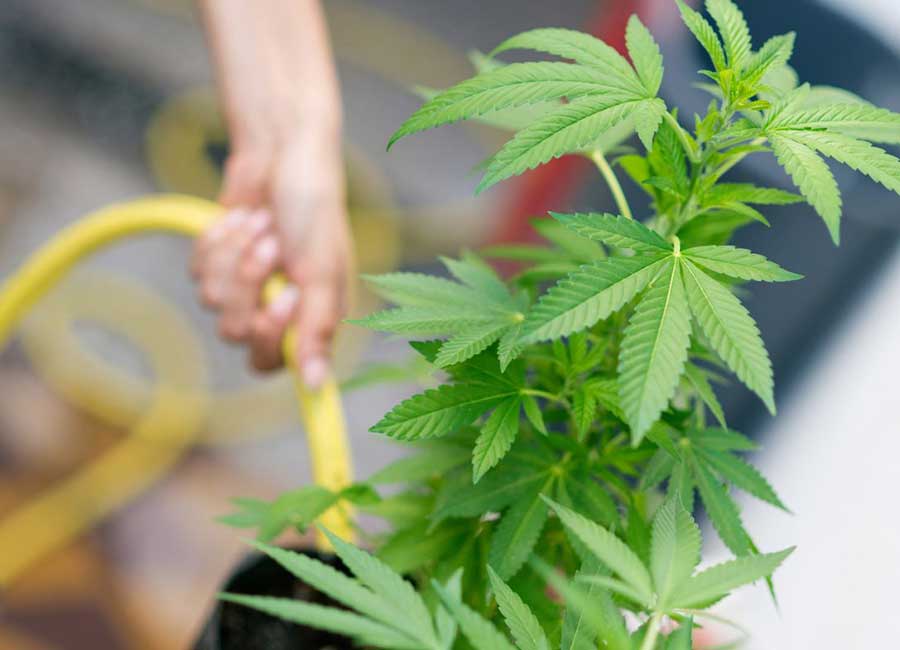
Other Factors That Can Determine Cannabis Watering
Other factors that can affect the watering needs of cannabis plants include the pot size, the medium used, humidity and temperature levels, light exposure, and overall growing conditions.
Humidity
Humidity levels can affect watering intervals and amounts in cannabis plants. High humidity levels can lead to increased evaporation and transpiration, requiring plants to be watered more frequently. On the other hand, low humidity levels can slow down evaporation and transpiration, allowing plants to be watered less frequently.
Light Intensity
The light intensity can impact the amount of watering needed for cannabis plants. Generally, higher light intensity leads to increased transpiration, which causes the plant to lose more water. Plants grown in high-light environments may need to be watered more frequently or with greater water to maintain proper hydration. Conversely, plants grown in low-light environments may need less water as they are transpiring less and retaining more moisture.
Size Of Containers
The size of the container that a cannabis plant is grown in can have a significant impact on watering intervals and amounts. Larger containers can hold more moisture, meaning the plant has a long time before it needs to be watered again. Smaller containers, on the other hand, dry out faster and will require more frequent watering. The frequent watering is because there is a smaller volume of soil to hold water, and roots have less room to spread out and absorb moisture.
Watering Cannabis Problems & Solutions
Watering is crucial to cannabis growth, and maintaining the right balance is important for healthy plants. Problems like underwatering and overwatering can lead to stunted growth and nutrient deficiencies. It’s important to understand each problem’s signs and implement appropriate watering solutions, such as adjusting the frequency or amount of water and improving soil drainage. By monitoring the soil moisture levels and paying attention to the plant’s appearance, growers can avoid these common watering problems and ensure the success of their cannabis crop.
Overwatering Cannabis Plants
Overwatering cannabis provides too much water to the plant, causing it to stay consistently waterlogged. An overwatered plant can result in root rotting and other water-related issues that can negatively impact plant growth and health. Overwatering can also cause a lack of oxygen in the soil, leading to stunted growth and other symptoms such as yellowing leaves, wilting, and slow growth.
How To Tell If You’re Overwatering Cannabis
To know if you are overwatering, you should look out for signs like yellowing of leaves, stunted growth, and root rot. If the soil constantly feels damp and doesn’t drain well through the drainage holes, or if you notice any mold growing, it’s a good indication that you are overwatering your plants.
How To Correct Overwatering Cannabis
To correct overwatering in cannabis plants, it is important to first identify the problem by checking the soil for signs of too much water, such as root rotting or a saturated environment. To fix the problem, immediately stop watering and allow the soil to dry out before resuming a normal watering schedule. Improving soil drainage holes and increasing air circulation around the plant can help prevent future overwatering and are most likely the factors that lead to overwatering problems.
Underwatering Cannabis Plants
Underwatering cannabis occurs when thirsty plants receive insufficient water, leading to wilting, stunted growth, and even death. Additionally, underwatering can happen when the soil stays too dry, or the grower needs to water the plants regularly or with enough water.
How To Tell If You’re Underwatering Cannabis
The following symptoms can recognize underwatering cannabis:
-
Yellow or brown leaves
-
Slow growth
-
Dry soil and stems
-
Leaf tips curling down
To check for underwatering, stick your finger about 2-3 inches into the soil. If it feels dry, it’s time to water the plant. Another way to check for underwatering is to lift the pot; if it feels light, the plant needs watering.
How To Correct Underwatering Cannabis
To correct underwatering, you should water the cannabis plant more frequently or increase the water each time. Ensure to water thoroughly until the soil is evenly moist but not soaking wet. Observe the plant for signs of improvement, such as perked-up leaves and better overall growth, and adjust watering as needed. Keep a schedule and note how the plant responds to different amounts of water.
What Should I Do If A Cannabis Plant Is Not Absorbing Water?
If a plant is not absorbing water, there could be various reasons. Firstly, check the soil to see if it is compacted, which can prevent water from reaching the roots. If the soil is compacted, gently loosen it with a fork. However, if the soil is dry and crusty on the surface, the plant may suffer from drought stress. It’s important to thoroughly water. If the soil is too wet, this can indicate that the plant is overwatered. In this case, wait for the soil to dry before watering again.
Additionally, check for root rot, which can be caused by overwatering and can prevent the roots from absorbing water. If root rot is suspected, remove the plant from the soil and inspect the roots. Cut away any black or mushy roots, and replant them in fresh soil.

How To Automate Cannabis Watering Cycles
Automating the watering cycle of your cannabis plants can simplify the growing process and improve plant health. It involves using a watering system programmed to water the plants at specific intervals. You should consider factors such as the size of the containers, humidity, and light intensity. Automated watering systems can help prevent overwatering and underwatering, making it easier to maintain consistent water levels for optimal growth.
Drip Feed System
Drip feed systems are a popular and efficient way of watering cannabis plants. They consist of tubes, drippers, and a water pump delivering a regulated amount directly to the plant’s roots. The water is delivered slowly, reducing the risk of over- or underwatering and promoting healthy root growth. Drip feed systems can be set to run automatically and at specific intervals. This makes them an ideal solution for cannabis cultivators looking for a hands-free and controlled method of watering their plants.
Set Watering Timers According To Plants Needs
Setting watering routine timers according to the needs of your cannabis plants is an effective way to automate watering cycles. Additionally, setting timers help to ensure that your plants are getting the right amount of water at the right time. Secondly, determine the right schedule. Consider factors such as the growth stage, the container size, the light and temperature conditions, and the humidity levels. You can use a simple timer or a more advanced automated system to control your watering cycles. It’s also important to monitor your plants and make any necessary adjustments to your watering schedule based on their health and growth.
Final Thoughts – Watering Cannabis
Watering is an important aspect of growing healthy cannabis plants. It is crucial to understand the specific needs of your plants. For instance, the optimal water source, temperature, pH levels, and frequency of watering. This will help to ensure that your plants receive enough water without overwater or underwater. In addition, it is important to consider other factors, such as humidity, light intensity, and container size. These can affect the amount of water your plants need. Automating your watering system helps maintain consistent watering cycles and save time. The best approach is to find a balance for your specific set-up and observe the signs your plants give. This will help you identify when they need more water or less water, over time. A little attention and care go a long way in maintaining thriving cannabis plants.
